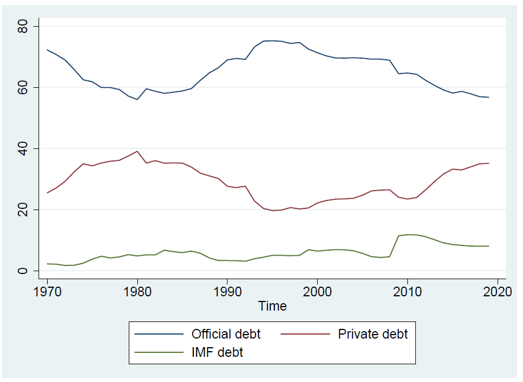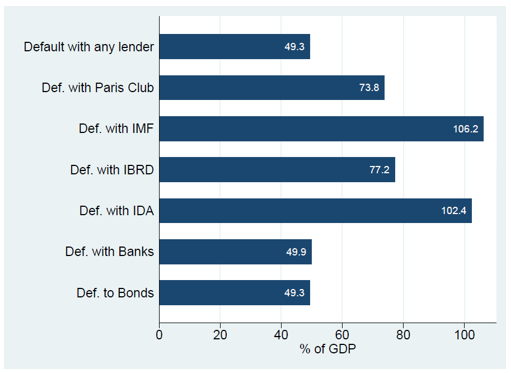References
Arellano, C. (2008). “Default Risk and Income Fluctuations in Emerging Economies”, American Economic Review, 98, pp. 690-712.
Beers, D., and P. de Leon-Manlagnit (2019). The BoC-BoE Sovereign Default Database: What’s New In 2019?, Bank of Canada Staff Working Paper 2019-39.
Beers, D., E. Jones and J. Walsh (2020). “BoC-BoE Sovereign Default Database: What’s new in 2020?”, Bank of Canada Staff Analytical Note, 2020-13.
Bru Muñoz, M. (2022). Financial Exclusion and Sovereign Default: The Role of Official Lenders, Banco de España, Working Paper, 2206.
Horn, S., C. M. Reinhart and C. Trebesch (2021). Coping With Disasters: Two Centuries of International Official Lending, World Bank Policy Research Working Paper, 9612.
Marchesi, S., and T. Masi (2020). “Sovereign rating after private and official restructuring”, Economics Letters, 192, 109178.
Marchesi, S., T. Masi and P. Bomprezzi (2021). Is to Forgive to Forget? Sovereign Risk in the Aftermath of a Default, Centro Studi Luca D’Agliano Development Studies Working Papers, 475.
Schlegl, M., C. Trebesch and M. L. J. Wright (2019). The Seniority Structure of Sovereign Debt, NBER Working Paper Series, WP 25793, pp. 1-63.





